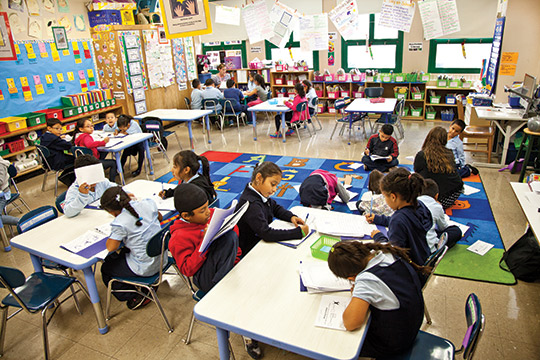Teaching Inclusion in the Classroom

General education teachers are tasked with keeping many balls in the air, which is half the fun of working in a classroom—there are so many constantly moving and evolving pieces for which to account. One of these essential pieces to ensure equitable learning for every student is inclusion. Of course, this term is nothing new to educators—we work to create an inclusive environment on a daily basis. What might be new, however, are the many ways in which we teachers can look at inclusive practices. Since every child is different, we must continue our exploration of strategies and practices that best suit the needs of all students.
One best practice that supports inclusion is to vary the output of information. By this we mean that teachers should relay content and instruction in different ways. Some students, especially those with auditory processing difficulties, find that verbal instruction is hard to grasp. To ensure inclusion for these students’ special needs, teachers should try to present information in visual or tactile ways, in addition to the verbal instruction. Depending on the class or lesson, this might take the form of a demonstration, video, or hands-on activity. Some skills or lesson objectives may even lend themselves to a more kinesthetic or tactile approach. Even students without an auditory processing deficiency would find it confusing to listen to a verbal explanation of cursive letter formation. A demonstrated approach to writing using clay, beads, shaving cream, etc., makes more sense.
Similarly, when teachers are introducing concepts like grammatical conventions or figurative language devices, an audio or visual approach might work better than a written explanation of how a properly formatted sentence should sound. Teachers should also practice inclusion by encouraging students to demonstrate their learning in various ways. This means that, not only is the presentation of information different for each child, but the means by which a student exhibits mastery should be individualized, as well. Some students might prefer to write a formal, organized research paper to convey their knowledge of a subject, while others might feel most comfortable presenting a visual demonstration of their topic. The key is to provide multiple opportunities for students to display their knowledge so that everyone’s learning styles are being incorporated.
Another way to look at inclusion is to utilize multiple means of engagement. For students with attention issues, memory difficulties, or other learning disabilities, engagement in the classroom can make all the difference. Engagement might mean listening to music to identify metaphors, similes, or narrative voice. A film study might help students understand a new culture or part of the world. An analysis of a slow motion field goal might help students understand kinetic energy, velocity, or other properties of physics. The point is, when students are engaged, learning not only flourishes, but behaviors and attentiveness increase, as well. Engagement also assists with moving information from short-term memory into long-term memory. Inclusion, with regard to engagement, means that teachers are not only teaching with methods for each type of learner, but also appealing to each learner, so that memory of the information or skill can solidify. In order to provide engagement, there must be a level of interest on the student’s end. As different as each student’s learning style may be, so may be their interests.
This is where building relationships with students becomes essential for inclusion. Cultural inclusiveness provides students with a platform to express themselves on a more personal level. This also promotes a positive classroom environment, one in which students feel heard, understood, and accepted. Cultural inclusion allows students to see beyond themselves, as well, which fosters perspective-taking.



